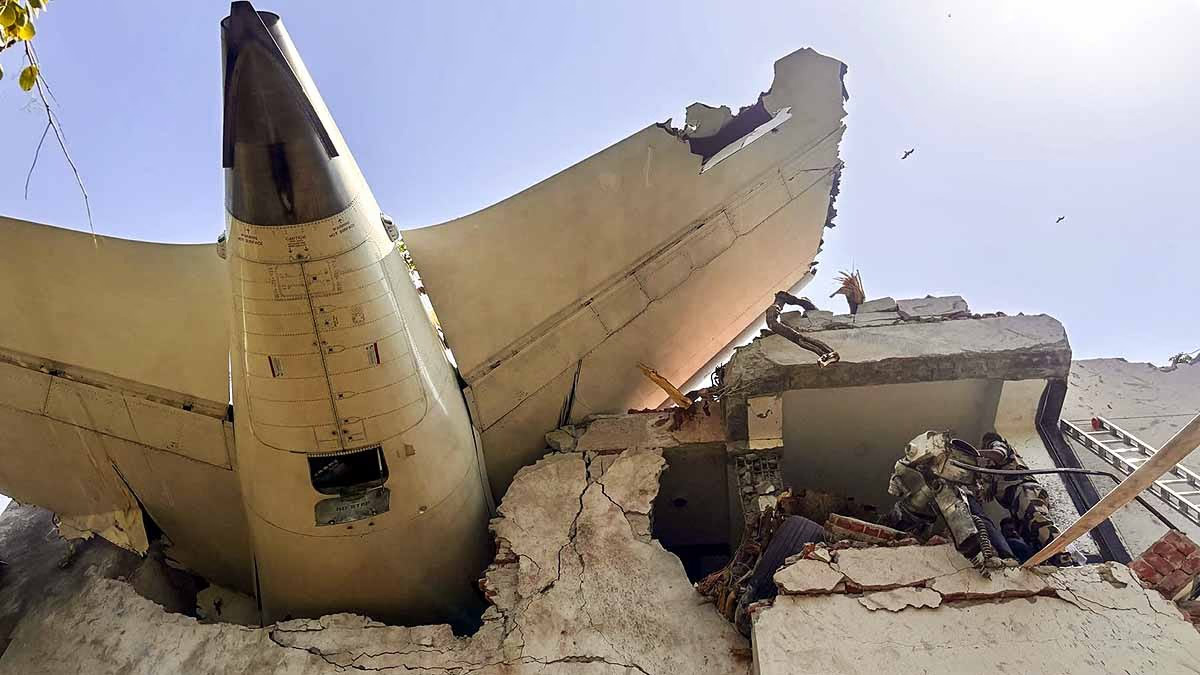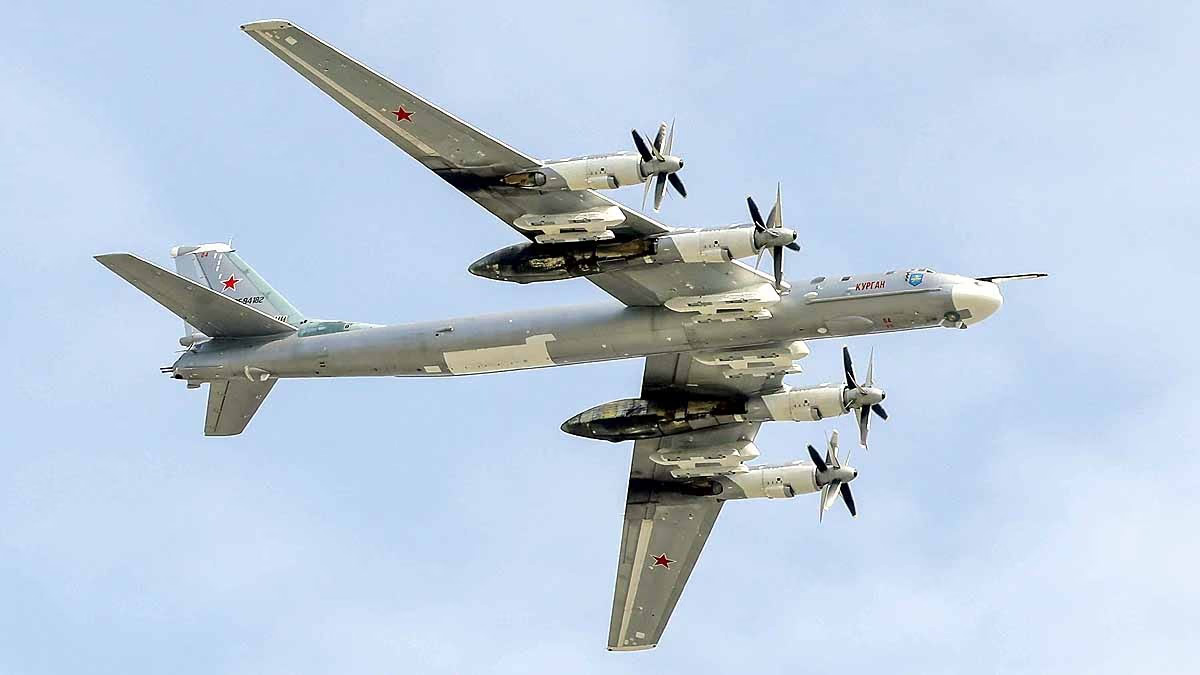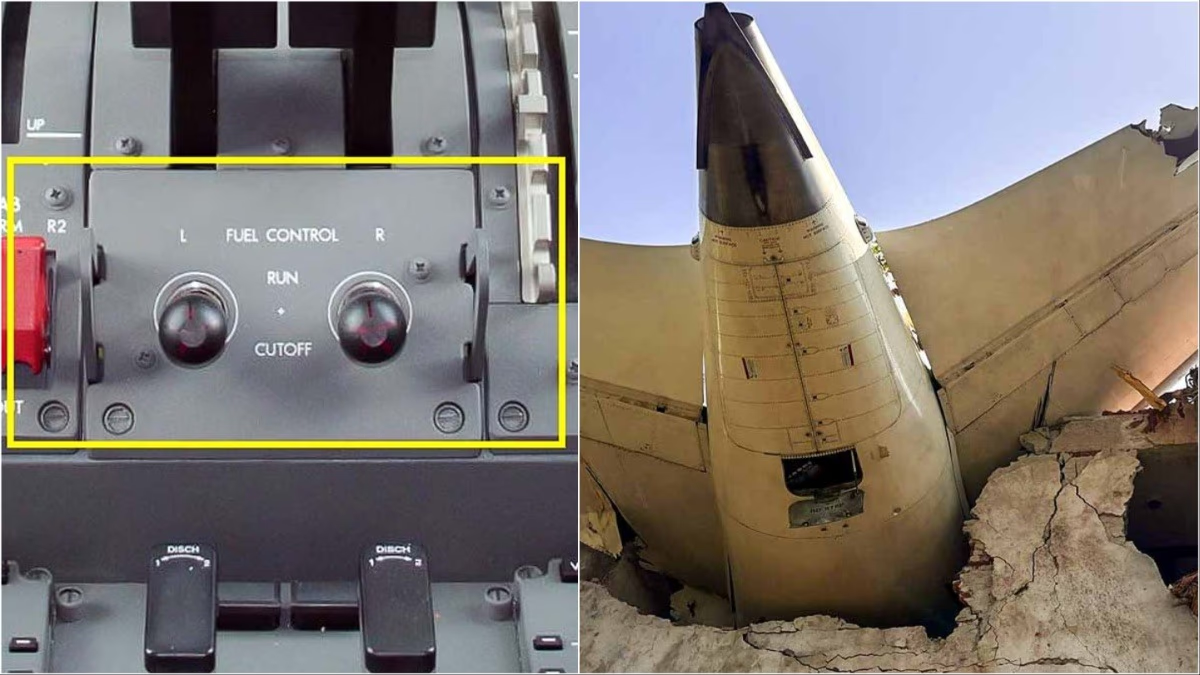This story is based on a preliminary
issued by the Air Accident Investigation Bureau (AAIB) of the Air India crash in Ahmedabad, attempting to unravel the reasons behind Flight 171's accident. Let’s break it down to clarify the sequence of events.
Air India Flight 171 Accident: Sequence of Events
1. Flight Commences (Before 1:38:42 PM)
Air India Flight 171 initiated its takeoff process normally. The aircraft reached the required takeoff speed, about 180 knots (approximately 333 km/h). At this point, everything seemed fine. The flaps were set at 5 degrees, typical for takeoff, and throttle levers were at full thrust.
Read Also:
2. Engines Shut Down (1:38:42 PM)
At about 1:38:42 PM, both engines' (Engine 1 and Engine 2) fuel cutoff switches transitioned from "run" to "cutoff" unexpectedly within a second, halting fuel supply to the engines.
This caused a rapid decrease in both engines' speed (N1 and N2). Cockpit voice recordings reveal a pilot wondering aloud about the fuel cutoff, with the other confirming no manual intervention, indicating their disbelief over the spontaneous switch off.
Read Also:
3. Engines Slowing and RAT Activation (1:38:47 PM)
With fuel supply halted, both engines' speeds dropped below idle. Consequently, the Ram Air Turbine (RAT) hydraulic pump was automatically activated at 1:38:47 PM, providing emergency hydraulic power since the main engines failed.

Source: aajtak
4. Pilots Respond: Reactivating Fuel Switches (1:38:52 PM)
Pilots quickly adapted, switching Engine 1's fuel cutoff back to "run" by 1:38:52 PM. Two seconds later, the Automatic Power Unit (APU) inlet door unlatched, marking APU's auto-start for supplementary power.
By 1:38:56 PM, Engine 2's fuel cutoff also returned to "run". With the cutoffs reset, the Full Authority Digital Engine Control (FADEC) restarted ignition and fuel supply.
Read Also:
5. Engines Relighting (1:38:56 to 1:39:05 PM)
Exhaust Gas Temperature (EGT) for both engines began spiking, indicating relighting efforts. Engine 1's core speed (N2) slowly normalized, yet Engine 2 struggled; FADEC's repeated fuel injection failed to fully invigorate Engine 2.
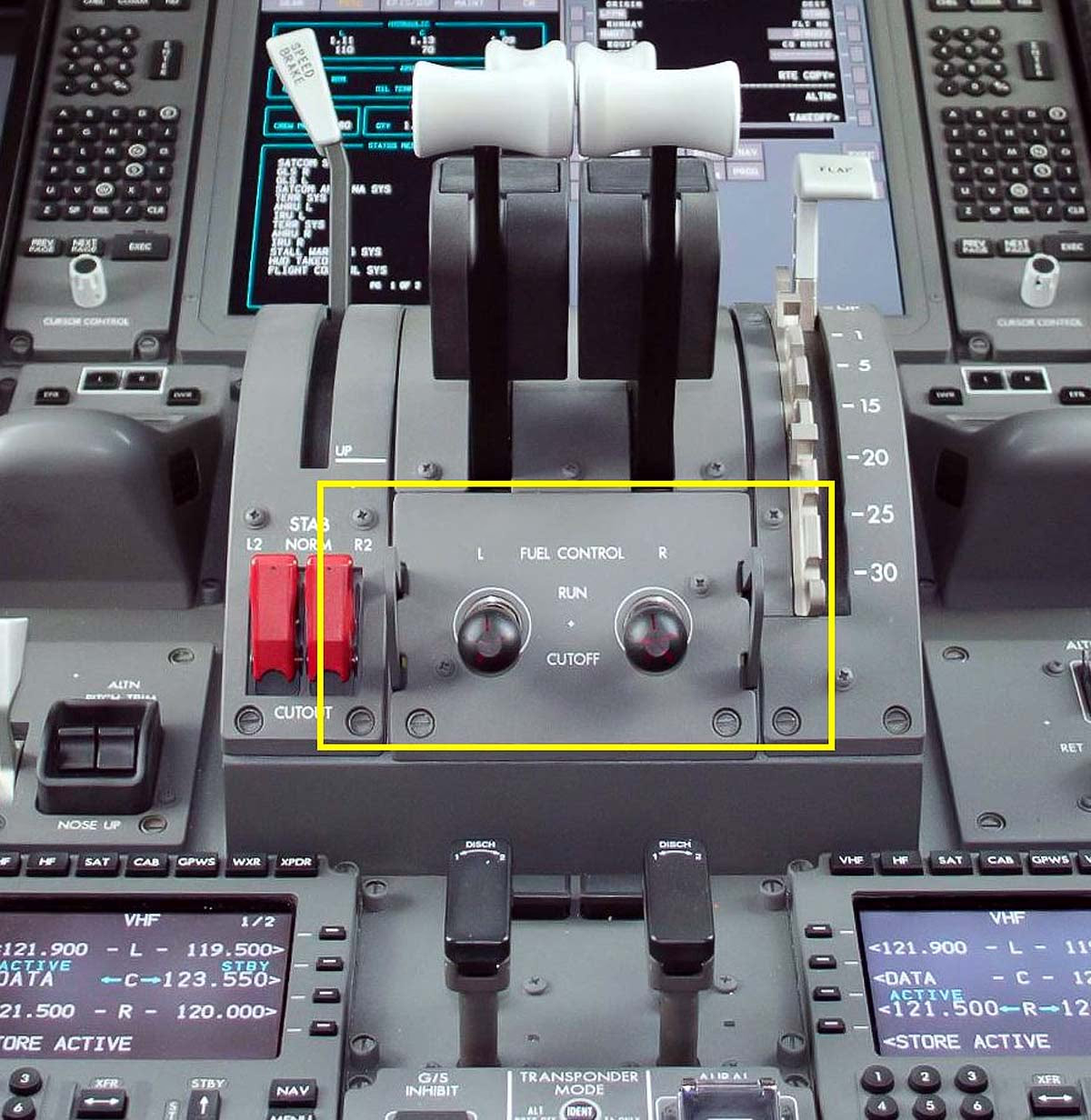
Source: aajtak
6. Mayday Call and Crash (1:39:05 PM)
A distress message, "Mayday Mayday Mayday," was initiated by a pilot around 1:39:05 PM, signifying aviation's gravest emergency. Despite ATC's query, pilots' silent response preceded the aircraft's off-airport crash. EAFR recording ceased at 1:39:11 PM, marking the crash instant.
7. Emergency Response (1:44:44 PM)
Upon noticing the crash, Air Traffic Control activated emergency protocols. Crash fire tenders departed at 1:44:44 PM for external airport rescue operations, aided by local fire and rescue services.
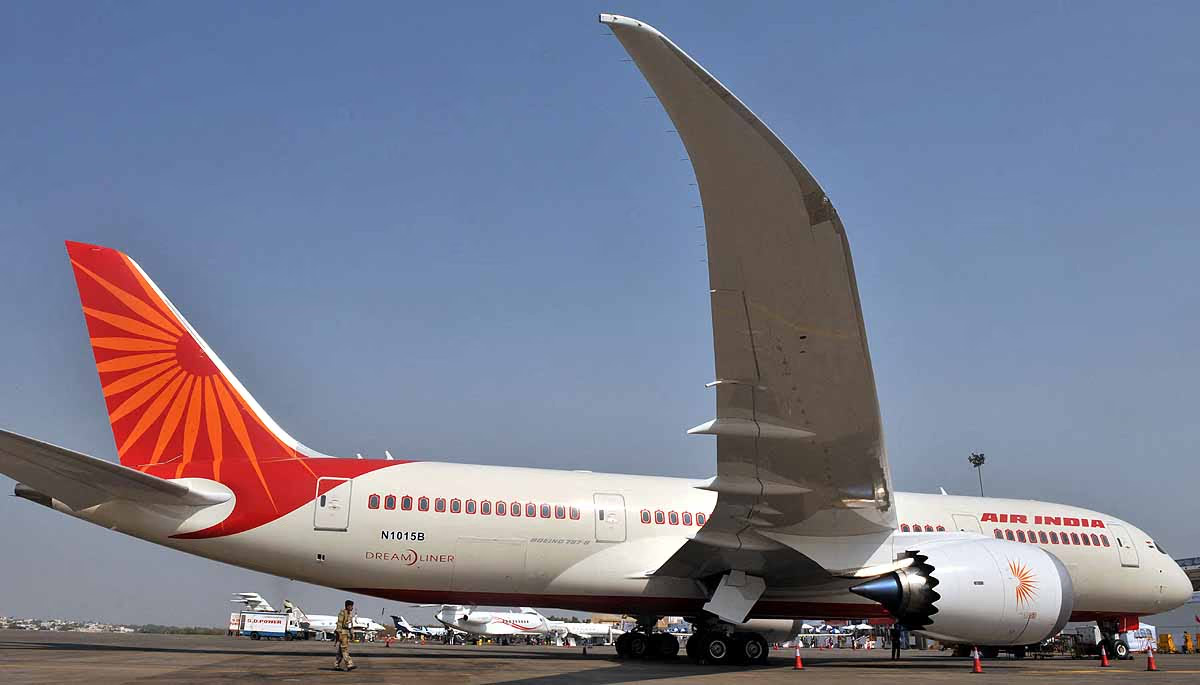
Source: aajtak
8. Wreckage Situation
The investigation found that several significant parts of the aircraft were heavily fire-damaged...
Flap Handle: Positioned at a 5-degree angle, corroborating EAFR data.
Throttle Levers: Both were fire-damaged at idle, although data up to the crash confirmed takeoff thrust.
Fuel Control Switches: Both found in the "run" position.
Reverser Levers: Were warped but "stowed" (closed).
Landing Gear Lever: Found in "down" position.
TO/GA and Autothrottle Disconnect Switches: Wires were exposed, but badly damaged.
9. Flight Data and Cockpit Voice Recorders
Two Enhanced Airborne Flight Recorders (EAFRs) were positioned, one near the tail, another at the front, capturing both flight data and cockpit voice. Downloaded data enclosed 49 flight hours across 6 flights, including this incident. A 2-hour cockpit voice recording captured the entire ordeal.
Read Also:
Pilots Association's Stand
The Airline Pilots Association of India responded to the AAIB's preliminary report on the June 12 Air India Flight 171 crash.
"The report's tone suggests a bias towards blaming pilot error. We reject this presumption, demanding a transparent and factual investigation."
"The report was leaked to the media without accountable signatures or sources, lacking transparency as the process remains confidential, detracting from credibility. Qualified, experienced personnel, particularly line pilots, are still excluded from the investigation team."
